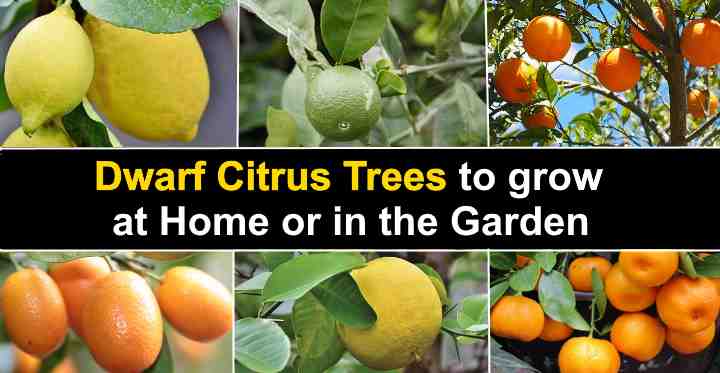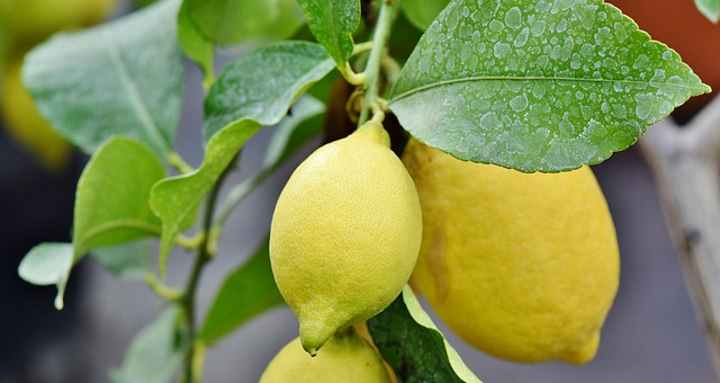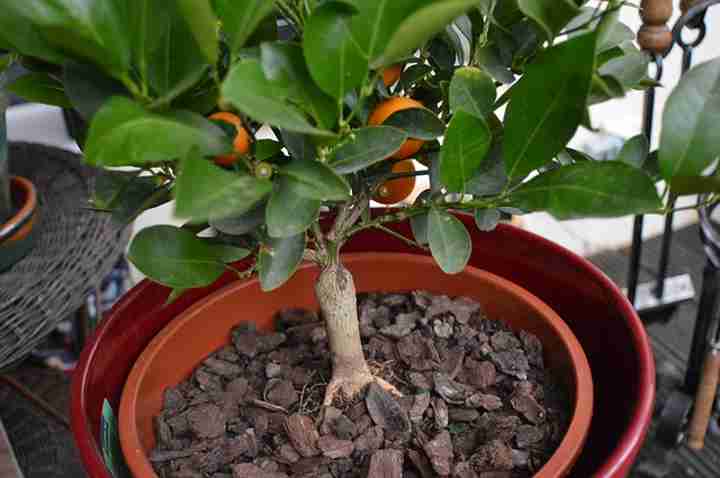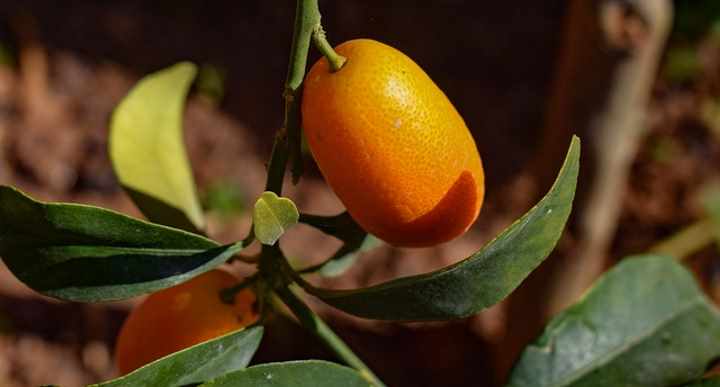Dwarf Citrus: Caring for Dwarf Lemon, Orange, Lime, and More Trees

Growing dwarf citrus trees is an excellent option to have lemons, limes, oranges, and grapefruits where space is limited. Many varieties of small citrus trees are small enough to grow in containers. One of the most popular indoor citrus fruits is a lemon tree. But you can also grow miniature orange or lime trees in a bright, sunny location. If you live in warm climates, dwarf citrus trees are perfect for a small backyard or colorful garden landscape.
Dwarf citrus trees such as lemons, kumquats, limes, oranges, and grapefruit are no different from regular fruit trees. The only difference is the size. Dwarf citrus trees grow to between 8 and 10 ft. (2.4 – 3). This size is much smaller than the size of regular fruit trees, which can be over 30 ft. (9 m) high. Semi-dwarf and dwarf fruit trees also produce fruit of similar size to regular trees.
Growing lemon trees and other citrus trees in pots is similar to growing them in the ground. The most important care tip for growing a citrus tree in a container is plenty of sunlight. To ensure healthy growth, dwarf citrus trees also need regular watering and proper humidity. If you look after a potted citrus tree well, you will get plenty of juicy, tangy citrus fruits.
Read on to learn about the best way to care for dwarf citrus trees. This guide will also give you the best tips on growing an indoor lemon, orange, or lime tree. You will also find out some of the best miniature and dwarf varieties of trees that grow citrus fruit.
What Are Dwarf Citrus Trees?
Citrus trees that grow in pots and containers are cultivated by grafting a regular citrus tree onto a dwarfing root-stock. The roots prevent the tree from becoming too tall, but you still get regular-sized fruit.
Due to their small and compact growth, dwarf citrus trees are an excellent choice for growing in yards that have limited space. You can also grow potted citrus trees outside on a balcony, patio, terraces, or deck area. With proper care, some miniature potted citrus plants also grow exceptionally well indoors.
Another benefit of growing mini citrus trees and dwarf cultivars is that they mature faster. A young dwarf citrus tree produces fruit a few years earlier than regular fruit trees.
How to Care for Dwarf Citrus Trees
Regular citrus trees and dwarf citrus trees have a few basic requirements when it comes to proper care. The right soil, proper watering, feeding, and light all need to be right to get delicious tasty fruit.
Let’s look in more detail at the best way to care for your evergreen citrus trees.
Light Requirements for Dwarf Citrus Trees
Dwarf varieties of citrus trees growing in pots need a lot of sunshine. Plant them or put the potted trees in a sunny part of your garden. Ideally, lemon, lime, and orange trees need at least 6 to 8 hours of sunshine daily.
If you are growing a lemon tree or orange tree as a houseplant, place the pot near a south- or west-facing window. Keep it away from direct sunlight as the hot sun shining through the window can result in leaf burn.
Getting adequate amounts of sunlight is the best way to ensure a large crop of juicy fruits from your tree.
Best Type of Soil for Citrus Trees
All types of citrus trees – lemons, oranges, satsumas, tangerines, limes, and kumquats – need well-draining soil. If your tree is growing in the ground, make sure and work in plenty of organic matter. This type of soil not only provides a steady supply of nutrients; it helps excess water to drain away.
Before deciding where to plant a citrus tree in your small garden landscape, ensure that water doesn’t gather there. Waterlogged soil can cause leaves to fall off and affect growth.
Soil maintenance and drainage for citrus trees can be easier when planted in pots. You need a sturdy terracotta, ceramic, wooden, or even plastic container. Drill drainage holes in the bottom and put a layer of clay pebbles on the bottom.
To get the best type of soil for your potted citrus tree, use a loamy soil mix with peat moss or leaf mold. You can get healthy organic soil by mixing one-third potting soil, one-third organic matter, and one-third peat.
The best tip for watering your dwarf citrus fruit tree is never to let the soil completely dry out. Make sure it’s moist, but not too damp or soggy.
Feeding a Dwarf Citrus Tree in your Yard
Even when using organic soil, your little citrus tree still needs care when it comes to feeding. The essential nutrients for dwarf citrus plants are nitrogen and potassium.
Your local garden center should have organic, slow-release citrus fertilizers. These specially-formulated fertilizers have micronutrients such as magnesium, zinc, iron, and manganese to feed citrus plants.
During the growing season, use a liquid fertilizer every 2 – 3 weeks to help your small citrus fruit tree thrive. In the fall and winter months, you can hold back with the feeding. However, you still need to feed it so feed half as often during this time.
Dwarf Citrus Trees: Pests and Diseases
Citrus trees growing in containers outdoors are more susceptible to pests and diseases than indoor varieties.
Pests that can affect dwarf citrus trees include snails, aphids, thrips, spider mites, and ants. Because your citrus trees are small, treating with insecticidal soap is relatively easy. Sometimes a firm spray from a hose is enough to dislodge pests from citrus foliage.
Proper care, such as appropriate watering and feeding is the best way to prevent diseases. Waterlogged soil and a lack of nitrogen are often to blame for dwarf citrus trees succumbing to diseases.
Keep on the lookout for brown blister spots or yellowing leaves. These blemishes can be the first signs of fungal or bacterial diseases.
Growing Dwarf Citrus Trees Indoors
Dwarf citrus trees such as lemons, limes, and small orange trees are well-suited to growing in containers. You can move the potted citrus plants indoors during cold winter months. When the weather warms and the sun shines, it is easy to transfer your small citrus tree outside.
How to choose the best dwarf citrus tree to grow indoors
Look for dwarf citrus cultivars that grow well indoors. Excellent examples include Meyer lemons, kaffir limes, and calamansi (Philippine lime).
Pots for indoor dwarf citrus trees
The essential tips for growing small citrus trees in a container is to have adequate drainage. There should be several holes on the base to allow excess water to drain. Put a layer of pebbles on the bottom to increase drainage and air circulation.
Also the minimum size of pot or container to grow fruit trees indoors or outdoors is 1 ft. by 1 ft. (30 cm by 30 cm), so make sure you choose a large enough container to accommodate your dwarf citrus tree.
Where to place small citrus trees indoors
Put the potted dwarf citrus tree near a south-facing window. Citrus trees need between 6 and 8 hours of sunlight daily, 12 hours of sunshine is even better. There should also be enough air circulating in the room for the tree to grow well. So, keep a window open.
Proper temperature for indoor potted citrus trees
The ideal temperature for indoor dwarf citrus trees is an average of 65°F (18°C). Don’t let the temperature drop below 55°F (12°C), and it shouldn’t get warmer than 88°F (31°C). Avoid placing the container near drafts, hot radiators, or furnaces.
Caring for your dwarf citrus tree indoor
Regular watering is the key to caring for your small citrus tree properly. The soil should be consistently moist, but not too damp or soggy. A layer of decorative pebbles can help keep the soil moist.
During winter, when the heating is on, regular misting helps to increase humidity. You can also use a room humidifier or place the potted citrus tree on a pebble tray that has water in it.
All types of citrus trees need regular fertilizer. You can use a slow release fertilizer to make sure that your potted citrus tree gets consistent nutrients.
Common problems growing indoor lemon trees and other citrus fruits
Proper care and attention are crucial for growing citrus trees in pots or containers. The restricted space means that growing citrus plants in containers is more stressful than growing outdoors.
You should have a healthy citrus tree with few problems if you ensure that the soil never dries out, it’s in a sunny position, and is away from direct heat and drafts.
To avoid stressing a potted citrus tree when moving from indoors to outdoors, there a few tips to ensure success. The most important one is to make the move gradually. After any threat of frost has passed, move the container to a part of your garden that is partially shaded. After a few days, move the tree into a sunny location. Follow these steps in reverse order to help acclimatize your citrus plant when moving it indoors.
Dwarf Citrus Trees
Dwarf citrus trees are attractive in any garden landscape, patio, balcony, or terrace. Their small size means it’s easy to harvest the fruit. Also, their evergreen leaves provide color all year long as well as a dash of yellow, orange, or lime when the fruits ripen.
Let’s look at some of the best dwarf citrus trees that grow well in containers or the ground.
Dwarf Meyer Lemon Trees

Dwarf lemon tree such as ‘Mayer’ can be grown indoors in a pot in a sunny location
Meyer’s lemons (Citrus x limon ‘Meyer’) are one of the most popular types of lemon trees for growing indoors or outdoors. This lemon tree hybrid grows to around 6 – 10 ft. (1.8 – 3 m) outdoors. However, with the proper pruning, you can restrict the height or shape of the tree to suit your small garden landscape or patio.
One of the beauties of Meyer’s dwarf lemon trees is that they produce fruit throughout the year. The potted tree has glossy green foliage and produces sweet, tangy lemons.
Dwarf lemon trees grow outdoors in pots in zones 9 – 11.
Growing an indoor lemon tree
Growing lemons trees indoors in pots make for excellent houseplants. In the right conditions and with the proper care, an indoor lemon tree can produce fruit regularly.
Use a 5-gallon (3.7-liter) container that has good drainage. Caring for a dwarf lemon tree indoors is similar to growing other small potted citrus plants. Keep the lemon tree in a sunny location in your home and water it so that the soil is always slightly moist.
Other types of lemon trees that grow well in pots are dwarf ‘Eureka’ lemons, ‘Lisbon’ small lemon trees, and ‘Ponderosa’ dwarf cultivars.
Dwarf Orange Trees

Potted dwarf orange tree requires sunny spot to grow well indoors
Many types of orange trees grow well in pots and are attractive features in small garden landscapes and patios. Outdoors, dwarf orange trees grow well in sunny garden areas in zones 9 – 11.
Indoor orange trees
If you are looking for an excellent miniature orange tree as a houseplant, try a Tahitian orange tree (Citrus x limonia ‘Otaheite’). This small citrus tree produces lots of small, sweet oranges. You can place the pots on patios or balconies in the summer and bring them indoors in fall and winter.
Dwarf Clementine Oranges
Another type of dwarf orange tree is clementines (Citrus × clementina). These are a hybrid citrus fruit of mandarin orange and sweet orange. The small leafy green tree produces delicious oranges that are easy to peel.
Dwarf Indoor Citrus ‘Satsuma’ Mandarin Tree
Satsumas (Citrus unshiu) are naturally small orange trees that grow to between 4 and 6 ft. (1.2 – 1.8). These citrus trees are well-suited to growing in containers and pots and are cold hardy. Satsumas are similar to mandarins and have a sweet, tangy taste.
Dwarf Lime Trees

A popular dwarf lime tree variety is the Persian lime
Many types of lime trees are excellent choices if you want to grow citrus trees in pots. Also, if space is limited in your backyard, a dwarf lime tree can be used as a specimen tree or evergreen shelter.
The best dwarf lime variety is the Persian lime (Citrus x latifolia ‘Bearss’). When grown in a container, Bearss lime trees grow to between 3 and 6 ft. (0.9 – 1.8 m) tall. In the ground in a sunny garden, dwarf lime trees can be between 6 and 15 ft. (1.8 – 4.5 m) tall.
Indoor lime trees
Persian limes are an ideal houseplant for their evergreen glossy green leaves and delicious small aromatic green citrus fruits. To care for an indoor lime tree, follow the care tips for growing citrus trees.
Dwarf Kumquat Citrus Trees

Dwarf kumquat tree produces small elongated orange citrus fruit with edible rind
Kumquat citrus trees are excellent for growing in pots and containers. Outdoors, kumquats are also one of the cold-hardiest citrus plants.
These small bushy citrus trees produce small orange citrus fruits in winter. Some of the dwarf cultivars make great fruit-producing houseplants as they only grow to about 3 ft. (0.9 m) tall. Unlike other citrus fruit, kumquats have edible rinds, and you can eat the fruit whole.
Some dwarf kumquat tree cultivars include ‘Nagami,’ ‘Fukushu,’ ‘Meiwa,’ and ‘Marumi.’
Calamondin / Calamansi: Miniature Citrus Tree
Calamansi (Citrus x microcarpa) is a small citrus tree that is popular as an indoor houseplant. This miniature citrus tree looks like an indoor orange tree, but in reality, it is a lime with orange rind.
Also called the Philippine lime, growing a calamansi in a pot is extremely easy. Its fragrant flowers, beautiful foliage, bushy appearance, and tiny orange fruits look amazing.
Outdoors, calamansi grows well in compact gardens in zones 9 – 11.
Dwarf Grapefruit Trees
If you live in sunny, warm climates (zones 9 and above), a dwarf grapefruit tree (Citrus paradisi x dwarf variety) will grow in your small backyard. Reaching heights of between 8 and 10 ft. (2.4 – 3 m), these mini citrus trees produce clusters of delicious citrus fruits.
You can also grow grapefruit trees in suitable containers, although they are probably too big to grow indoors. Potted grapefruit trees grow up to 6 ft. (1.8 m) tall and have a sizeable bushy spread.
Popular grapefruit cultivars for containers include ‘Ruby Red’ and ‘Rio Red.’
Related articles:
